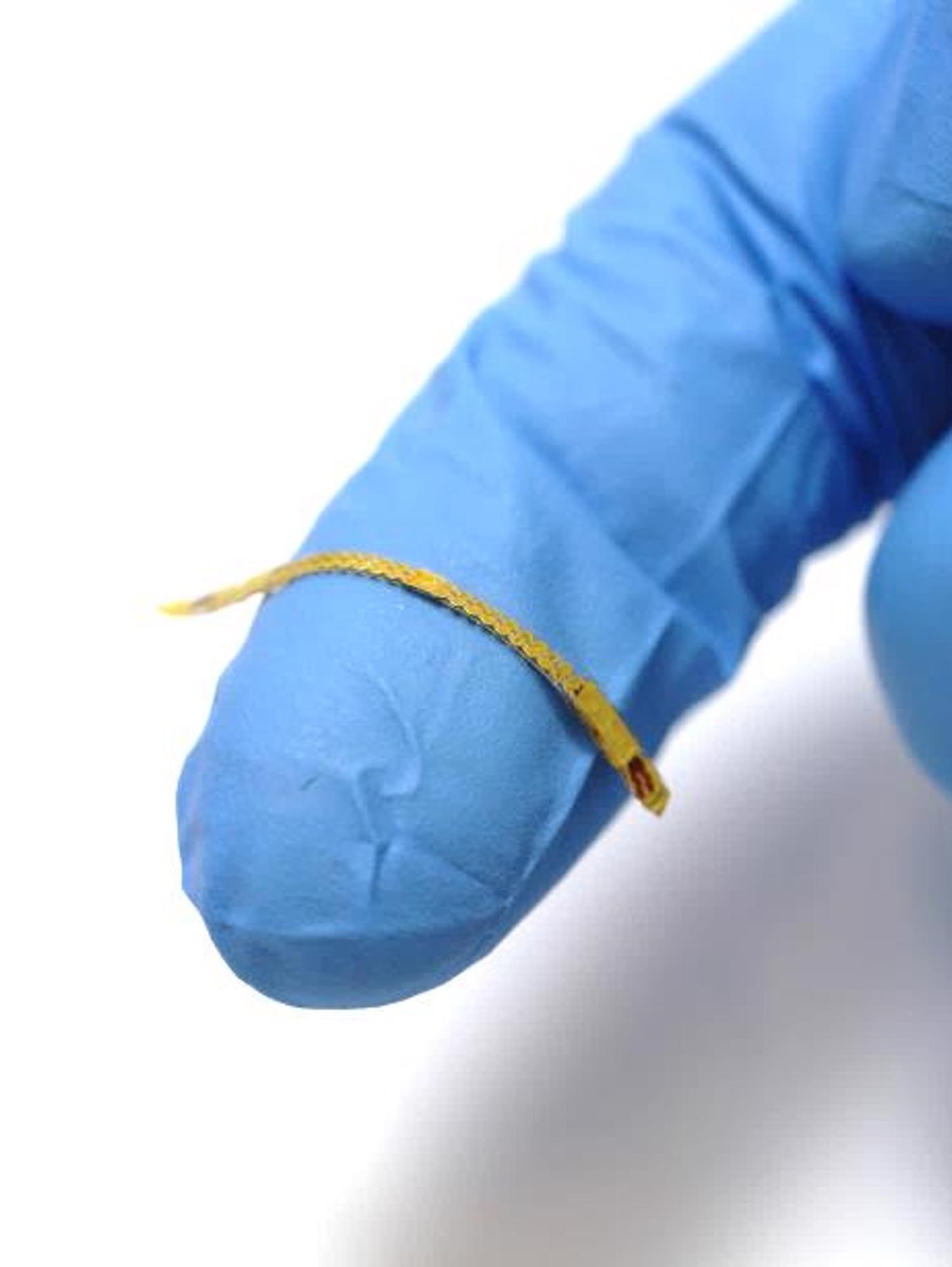Vascular diseases are among the leading cause of death worldwide. According to WHO statistics, around 32% of all global deaths are a result of vascular diseases, and 85% of these are caused by cardiac arrest or stroke.

Image Credit: Georgia Institute of Technology
While these figures are staggering, the majority of vascular diseases can be addressed with behavioral changes such as changing diet, reducing alcohol and tobacco consumption, as well as becoming more active and increasing physical activity.
However, to ensure the right steps are being taken when making changes to lifestyle as a reaction to vascular disease, it is important to get the health monitoring right to improve treatments.
Georgia Institute of Technology researchers recently released a study in the journal Science Advances in relation to their current development of a technology that would facilitate continuous monitoring attainable with wireless implantable devices to improve the treatment of vascular diseases.
The team are focused on improving the monitoring of hemodynamics – blood flow through the vascular system – to develop better treatments and patient outcomes. However, potentially fatal conditions such as hypertension and atherosclerosis run through a complex vascular system with arteries of different diameters and curvatures.
To deal with the twisting network of the vascular system, the Georgia team developed an electronic device consisting of a wireless stent platform with soft sensors incorporated to meet implantation and operation requirements. Moreover, the devices can be printed using aerosol jet-printing techniques.
The device can be operated wirelessly by inductive coupling to simultaneously supply real-time monitoring of blood pressure, flow, and pulse, which could offer clinicians a better way to detect an extensive range of vascular conditions.
This electronic system is designed to wirelessly deliver hemodynamic data, including arterial pressure, pulse, and flow, to an external data acquisition system, and it is super small and thin, which is why we can use a catheter to deliver it, anywhere inside the body.
Woon-Hong Yeo, Georgia Institute of Technology Researcher and Lead Author of the Study
The device, when implanted into a patient, expands and stops the artery from narrowing like a conventional stent while also supplying a constant stream of data to monitor the patient’s condition and provide information on the state of the device itself.
Now, once you have deployed a stent, you’re not sure if the problem was resolved and patients may come back with the same issue… It can be a defect of the stent, or an issue with stent deployment, or perhaps a problem with the patient’s blood flow.
Woon-Hong Yeo, Georgia Institute of Technology Researcher and Lead Author of the Study
Implantable & Wearable
In addition to being implantable almost anywhere inside the body, the team are planning to develop a wearable version of their sensor system for ultimate lightweight portability.
While the technology has only been tested on animal models so far, Yeo and his team hope that with the backing of a $400,000 grant from the National Science Foundation (NSF) that thet will be able to take the technology further.
The focus will be on finetuning the novel jet-printed nanomembrane sensors and other bioelectronics for wireless and wearable devices that would facilitate the continuous monitoring of vascular health.
Among the benefits of soft pressure sensors developed for this study, the scientists demonstrated conformability when integrated with the stent.
Using a novel printed elastomer pattern as the dielectric facilitated rapid response times and exceptional pressure sensing even when the sensor was subjected to bending forces at a radius of 0.25 mm, which is a significant improvement compared to existing technology as flexible pressure sensors typically cannot sense when bent.
With still some work to go in the development of these sensors, the team hopes to use the NSF grant to further their research and take the technology into the next phases of development.
The insights and knowledge we gain will be applicable for other physiological processes and challenges in biomedical science and engineering.
Woon-Hong Yeo, Georgia Institute of Technology Researcher and Lead Author of the Study
This implies that implantable wireless sensors could find applications beyond the continuous monitoring of vascular disease.
References and Further Reading
Who.int. (2022) Cardiovascular diseases (CVDs). [online] Available at: https://www.who.int/news-room/fact-sheets/detail/cardiovascular-diseases-(cvds)
Herbert, R., Lim, H., Rigo, B. and Yeo, W., (2022) Fully implantable wireless batteryless vascular electronics with printed soft sensors for multiplex sensing of hemodynamics. Science Advances, [online] 8(19). Available at: https://www.science.org/doi/full/10.1126/sciadv.abm1175?af=R
Research.gatech.edu. (2022) Georgia Tech Researchers Develop Wireless Implantable Vascular Monitoring System | Research. [online] Available at: https://research.gatech.edu/georgia-tech-researchers-develop-wireless-implantable-vascular-monitoring-system
Disclaimer: The views expressed here are those of the author expressed in their private capacity and do not necessarily represent the views of AZoM.com Limited T/A AZoNetwork the owner and operator of this website. This disclaimer forms part of the Terms and conditions of use of this website.